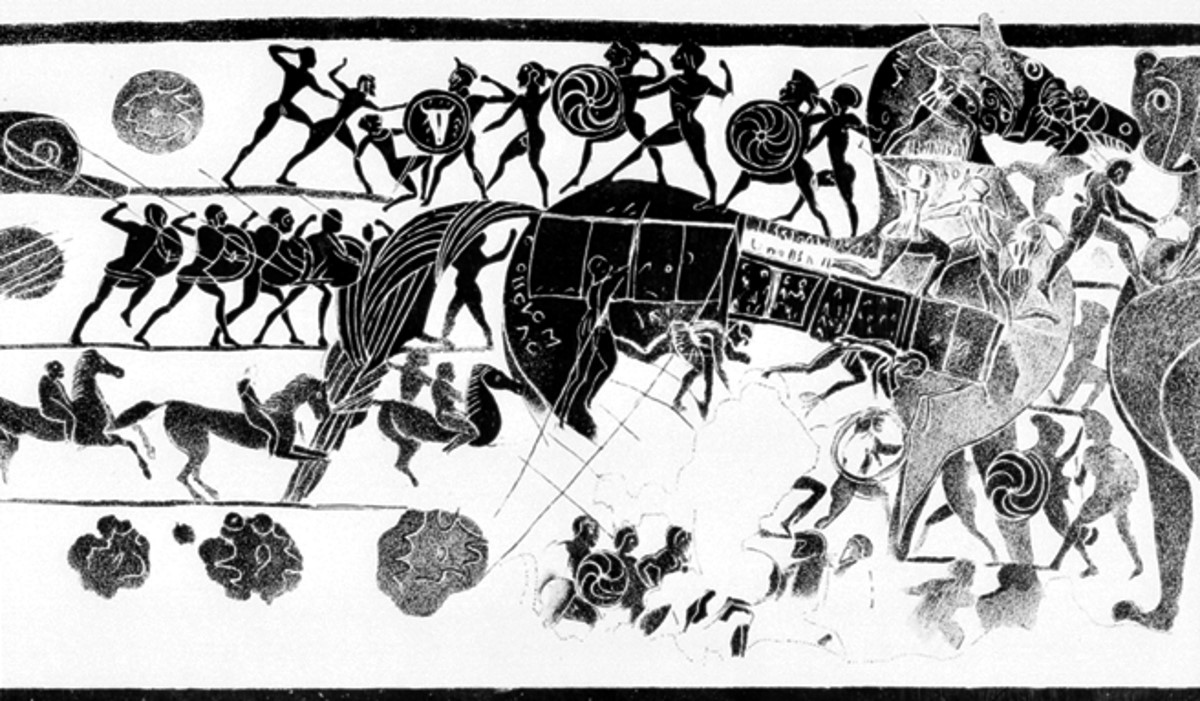Even after ten years the Achaens couldn't take the Trojan castle, and lastly made a wooden horse, hided the best soldiers in it and left in front of the castle. As if they are leaving, they hided the ships behing the Tenedos (Bozcaada). Trojans, who didn't listen the warnings of Cassandra, took this "gift" inside and they lost the castle. Homeros tells this story not in the Iliad, but in the Odyssey where the homecoming of Achaen warriors are told. There is no archeological findibg with regard to a Trojan Horse and it will also never be, because this is a mythological addition to the Trojan epos. Some researchers argue that the most effective weapon of that time was a long shot weapon which had a horse-like shape, and as time passed this turned to a mythological story. Blegen and other archeologists who excavated around 1930's argued that Troy was damaged by an earthquake and after that took over by Achaens easily and therefore the story of the horse is told, which is traditionally the god of earthquake. In recent excavations it has found that horse bones apperead only after Troy VI period (1600's B.C.E.) and they became frequent afterwards. This shows us that horse was a very important figure in the period of Trojan War and therefore this event should be transferred mythologically with this story. The oldest description regarding the Trojan Horse seen on a Mykonos vase from 670 B.C.E. (100 years after Homer). Afterwards many other descriptions of Trojan Horse can be found until our time.

Archaeology and Mythology
- 51 What are the findings with regard of the Trojan War?
- 52 Where had Trojan War happened?
- 53 Where is the coast of Achaens?
- 54 Are there any archeological findings regarding Trojan Horse?
- 55 Was Troy on the seaside?
- 56 Match the natural environment in the Iliad to our time?
- 57 Are the rivers told in Homer's Iliad really exist?
- 58 Can archeology prove the Trojan War?
- 59 What part of the Iliad is true?
- 60 Where do archeology and mythology intersect?